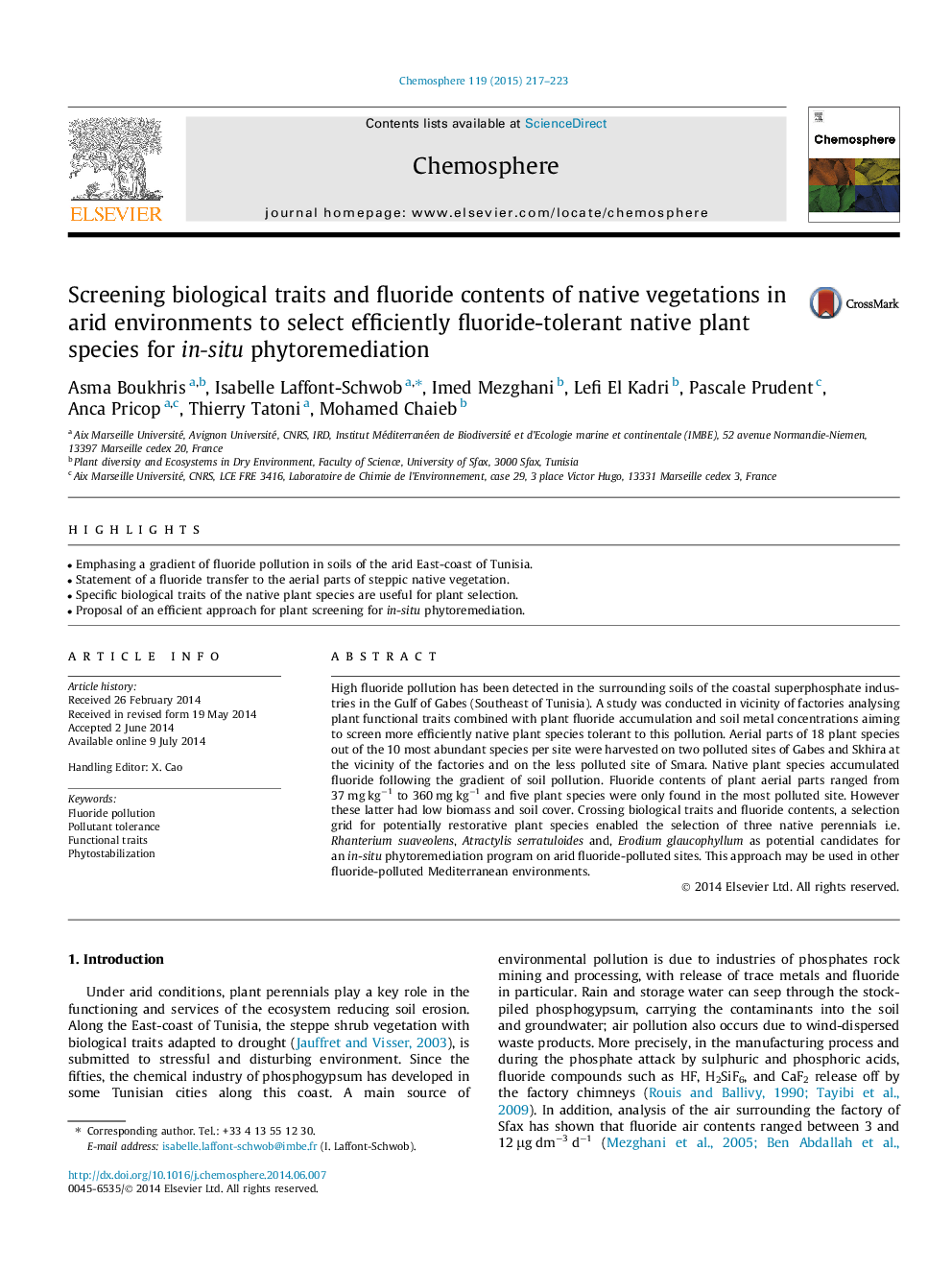| Article ID | Journal | Published Year | Pages | File Type |
|---|---|---|---|---|
| 4408623 | Chemosphere | 2015 | 7 Pages |
•Emphasing a gradient of fluoride pollution in soils of the arid East-coast of Tunisia.•Statement of a fluoride transfer to the aerial parts of steppic native vegetation.•Specific biological traits of the native plant species are useful for plant selection.•Proposal of an efficient approach for plant screening for in-situ phytoremediation.
High fluoride pollution has been detected in the surrounding soils of the coastal superphosphate industries in the Gulf of Gabes (Southeast of Tunisia). A study was conducted in vicinity of factories analysing plant functional traits combined with plant fluoride accumulation and soil metal concentrations aiming to screen more efficiently native plant species tolerant to this pollution. Aerial parts of 18 plant species out of the 10 most abundant species per site were harvested on two polluted sites of Gabes and Skhira at the vicinity of the factories and on the less polluted site of Smara. Native plant species accumulated fluoride following the gradient of soil pollution. Fluoride contents of plant aerial parts ranged from 37 mg kg−1 to 360 mg kg−1 and five plant species were only found in the most polluted site. However these latter had low biomass and soil cover. Crossing biological traits and fluoride contents, a selection grid for potentially restorative plant species enabled the selection of three native perennials i.e. Rhanterium suaveolens, Atractylis serratuloides and, Erodium glaucophyllum as potential candidates for an in-situ phytoremediation program on arid fluoride-polluted sites. This approach may be used in other fluoride-polluted Mediterranean environments.
